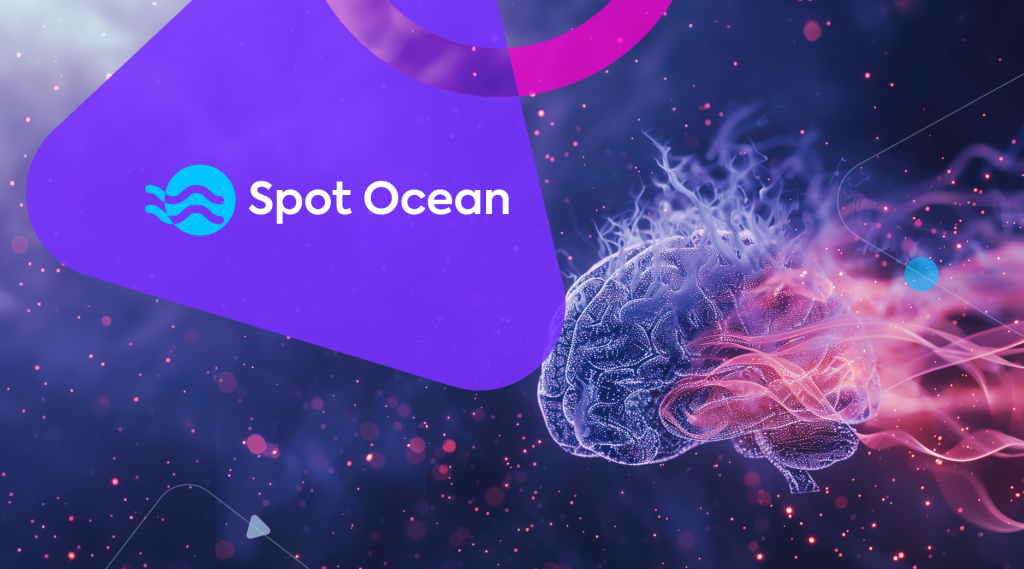
As artificial intelligence (AI) becomes increasingly central to business operations, many organizations are grappling with how to deploy and scale their AI models efficiently. When it comes to AI inference, or how AI analyzes and draws conclusions from new data, Kubernetes offers a compelling solution — but it’s not without challenges.
Optimizing Kubernetes for high-performance AI inference workloads often requires deep understanding of both Kubernetes internals and the specific requirements of AI models. For example, setting appropriate resource requests and limits for containers, especially for AI workloads with varying resource needs, can be tricky. Incorrect settings can lead to cost overrun, resource starvation, or inefficient resource utilization.
This is exactly where Spot Ocean can assist, with the following features:
1. Scalability and resource optimization
AI inference workloads often have variable demand. For example, a natural language processing model might see spikes in usage during business hours and lulls overnight. Kubernetes’ auto-scaling capabilities are particularly valuable here:
- Horizontal Pod Autoscaler (HPA) can automatically adjust the number of inference pods based on CPU utilization or custom metrics.
- Vertical Pod Autoscaler (VPA) can adjust resource requests for pods, ensuring they have the right amount of CPU and memory.
- Cluster Autoscaler can add or remove nodes from your cluster based on resource needs.
Spot Ocean constantly monitors application resource needs and quickly scales up or down to meet those needs. This dynamic scaling ensures you’re not overpaying for idle resources during quiet periods while still being able to handle sudden traffic spikes.
2. High availability and fault tolerance
AI inference often needs to be highly available, especially for critical applications. Kubernetes enhances reliability through:
- ReplicaSets, which ensure a specified number of pod replicas are running at all times
- Pod anti-affinity rules, which can spread replicas across different nodes or even different availability zones
- Health checks and automatic restarts for failing containers
- Rolling updates that allow for zero-downtime deployments of new model versions
These features combine to create a robust, self-healing system that can withstand individual pod or even node failures without service interruption. On AWS, Ocean enhances the robustness of Kubernetes clusters by actively monitoring node health statuses and swiftly replacing unhealthy nodes. It supports various Kubernetes scheduling mechanisms, ensuring efficient resource allocation and pod distribution. This proactive approach contributes to a self-healing system that can withstand pod or node failures, maintaining optimal cluster health and performance.
In addition to its health monitoring capabilities, Ocean also supports Kubernetes’ pod anti-affinity rules, which help to spread replicas across different nodes or even different availability zones. This increases the system’s resilience and enhances the overall distribution of workloads, further contributing to the health and performance of the cluster.
3. Streamlined deployment and updates
For AI inference, being able to quickly deploy new model versions is crucial. Kubernetes facilitates this through:
- Declarative configurations that describe the desired state of your deployment
- Rolling updates that gradually replace old pods with new ones
- Canary deployments that allow you to test new versions with a subset of traffic
- Easy rollbacks if issues are detected with a new version
Spot Ocean supports rolling updates on the clusters or on a specific Virtual Node Group (VNG) with one button. This allows data scientists and machine learning (ML) engineers to quickly roll out a new image, user data, or security groups, iterating their deployments with ease.
4. Resource isolation and multi-tenancy
In many organizations, multiple teams or projects may need to deploy AI models. Kubernetes provides:
- Namespaces for logical partitioning of resources
- Resource quotas to limit resource usage per namespace
- Network policies for controlling inter-pod communication
- Role-Based Access Control (RBAC) for fine-grained permission management
This allows multiple teams to share a cluster while maintaining isolation and preventing resource conflicts. Ocean’s Virtual Node Groups (VNGs) enhance this multi-tenancy by offering an additional layer of control. VNGs allow for the management of different types of workloads on the same cluster, providing more visibility into resource allocation and flexibility in settings. This ensures even more granular resource management and isolation, further preventing resource conflicts.
5. GPU resource sharing and optimization in Kubernetes
Kubernetes, recognizing the importance of GPUs in handling AI/ML tasks, has integrated features for efficient and optimized GPU utilization:
- Many AI models, especially deep learning ones, benefit from GPU acceleration due to their ability to handle complex computations and parallel processing tasks efficiently.
- Kubernetes offers native support for scheduling GPU resources, allowing for precise pod scheduling based on available resources.
- Kubernetes also enables the sharing of GPUs among multiple pods using GPU sharing plugins, leading to efficient use of expensive GPU resources.
- Kubernetes’ extended resources feature allows cluster administrators to advertise unique node-level resources like GPUs.
Ocean further enhances GPU utilization in EKS by integrating with Kubernetes to utilize the extended resources feature for improved scaling activities. Administrators can advertise resources based on specific parameters, allowing pods to request these resources for more accurate scheduling and better resource utilization.
6. Cost management
AI inference can be resource-intensive and potentially expensive. Kubernetes helps manage costs through:
- Efficient resource allocation and scaling
- Bin packing algorithms that maximize node utilization
- Ability to use pre-emptible/spot instances for non-critical workloads
- Integration with cloud cost management tools
By optimizing resource usage and providing fine-grained control over your infrastructure, Spot Ocean can significantly reduce the operational costs of running AI inference at scale.
Working on AI projects?
Kubernetes benefits for AI inference workloads are substantial but may come with operational complexities. Spot Ocean provides a comprehensive, scalable, and efficient infrastructure optimization and cost reduction solution for organizations looking to maximize their AI infrastructure budget.
Request a demo with a solution architect.


